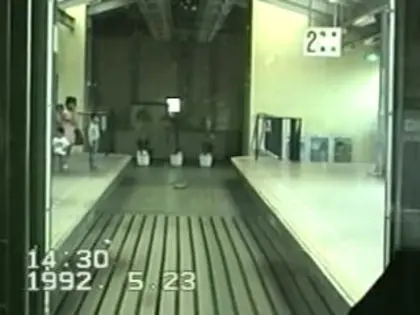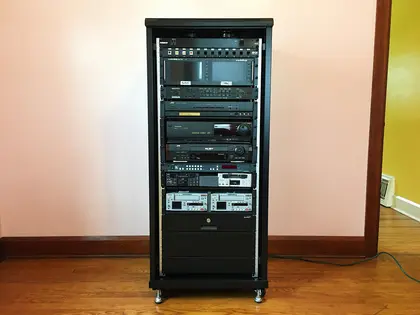
Figure 1: Alf, “Welcome to Alf’s Room. I am Alf”
A colleague of mine recently bought a capture card to record their Nintendo Switch. I asked if they wanted to stream on Twitch or post to Youtube. “No,” they explained, “I just like saving the recordings for my personal archives…something to remember.”
They explained that they once posted often on a Youtube channel and were proud of the content. Even with some regular viewers, though, they decided to delete the channel and contents along with it. Looking back, they deeply regret that decision – understandable.
I’ve had a similar experience. I had a Youtube channel sometime around 2011, posting silly game montages. I wasn’t any good at the games but enjoyed creating, curating, and narrating. In some ways, the channel made me feel like I was contributing to the broader gaming community.
You can imagine my disappointment when someone commented: “your videos are fantastic; if only you started 3 years ago.” Looking back, that comment is hilariously short sighted. Youtube and esports were in their infancy back then and still are in many ways. But I was young and took feedback from a random internet stranger to heart – something I still struggle with today. I chose to believe that I was too late to the punch. Like my colleague, I deleted the channel.
In hindsight, I think that was a huge mistake. My content was likely the most sincere that I’ll ever produce. I had no expectations. “Youtuber” was barely a career, and I was stoked to get 50 views. I was posting for myself; something relatively few folks can say today – myself included.
That conversation with my colleague highlights a crucial distinction between personal and public content. There’s something inherently genuine and intimate about content created just for yourself or your closest circle. There’s no ego – only enthusiasm. That sincerity makes it all the more intriguing to the outsider and what I believe contributed to Youtube’s early success.
Spicy P and the Handycam Vision
Pascal Siakam, an NBA player currently with the Toronto Raptors, showed up to the NBA All-Star game this year with a tape camcorder – three, actually! What may have started as an homage to Shaq and his VX1000 turned into a spectacle all its own.

Figure 2: Sam Byford, Pascal Siakam and his NBA All-Star Weekend camcorders: an investigation
People were throwing themselves at the camera. In a sea of cellphones and broadcast equipment, everyone wanted to be taped by Spicy P and his Handycam Vision. It was a sincere gesture on Siakam’s part. His smiles were genuine, and everyone’s reactions were priceless. Afterwards, he posted clips to Instagram. The film was grainy and the colors fluctuated so often that it couldn’t be used for anything but personal records. I love that idea.
Lowering the production quality, in a way, signals to others that you intend to create memories – artifacts of a time worth remembering. Saikam didn’t stabilize his footage or edit out moments where the ref blocked the camera. He panned faster than the camera could capture, and he wasn’t concerned about lighting or framing or jump cuts. The footage is a lens through which he can relive those moments – we’re just along for the ride, warts and all.
Sam Byford has a full post exclusively dedicated to Siakam and cameras. I’ll leave the technical breakdown to him, because he’s certainly done his research.
Alf’s Room
Siakam’s story reminds me so much of Adachi Yoshinori’s website Alf’s Room, which gained popularity in small circles after Nick Robinson posted The mystery of MICHAELSOFT BINBOWS.
Alf’s Room is Yoshinori’s digital “cabinet of curiosities.” The site is broken down into a handful of categories like trains, computers, and music. One stands out: the “exhibition room,” home to “weird, unusual and mysterious things, photos, etc.” It’s a grab bag of oddities like t-shaped vending machines, potted plants at train stations, and holiday lights. Like Siakam, Yoshinori doesn’t worry about the composition of his photos. They exist solely to document his experiences.

Figure 3: Adachi Yoshinori, Ueki Station
On their own, these oddities and unusual mysteries wouldn’t garner likes or follows; they would never individually “blow up.” Yet, Alf’s Room did indeed go viral. It falls on the intersection of quaint and eccentric, and I have to believe that it gained brief fame because of its quirky personality. The site itself could be part of someone else’s “weird and unusual” digital curio – that’s what makes it so appealing.
His website isn’t some Squarespace-special. It’s been hand crafted and maintained since 1996 with no target audience in mind except himself. It’s a digital diary that just so happens to be publicly accessible.
As an aside, it’s the poster child of IndieWeb.
Betamax and Blinkenlights
Along with any conversation about digital archives comes concerns about mixing preservation and privacy.
For some time now, I’ve wanted to build a rack dedicated to the conversation and restoration of analog tape media. Aside from my love for all things blinken’, I’m interested in the preservation of at-risk media.
There’s an incredible amount of data actively decaying or otherwise falling victim to the annals of time. VCRs are breaking down, tapes are rotting, and interest in the older formats has completely disappeared with all but a dedicated few. Tapes are not a durable format, at least not the tape made for home consumption.

Figure 4: /u/nicholasserra, Video archival rack build: one year update; More gear, bigger rack
Ironically, that fragility makes this data more valuable. Disney will always have a master record of “Beauty and the Beast,” but your family memories can never be recovered.
Barbecues in the park, your child’s first steps, and highschool graduations are moments that capture the fundamental human experience and serve as a historical record regardless of how mundane the memory.
A close friend asked a simple but difficult question when I mentioned digitizing non-commercial tape: “do you think that’s an invasion of privacy?” Should the lifecycle of those tapes be tied to the lifespan of the camera-person? Is there a statute of limitation on privacy where these artifacts transition from personal effects to public archive? Where does ‘good will’ fit?
I don’t think there’s a clear answer to this moral quandary. But I do know that the same sincerity that makes cherished memories private and intimate also makes them intriguing. In some paradoxical way, that also makes them worth sharing.
So what?
So what do blinkenlights, Alf’s Room, and Spicy P have to do with each other? For starters, data is plentiful and only getting more abundant. That presents a new challenge in deciding what data is worth keeping. I’ll argue, the most important data are the bits you never share – the bits that can never be replaced.
Forget those well lit, well staged, well edited ‘candids’; I’m talking about those half-drunk selfies with your mother at Christmas dinner.
I’m talking about Adachi Yoshinori’s snapshots tracking the history of potted trees at his local train station or Pascal Siakam’s grainy footage of his friends at the All-Star game.
I’m talking about my Youtube channel from 2011 and those VHS tapes stuffed deep in your grandparents’ closet. I may not be the right person to preserve them, but you are.